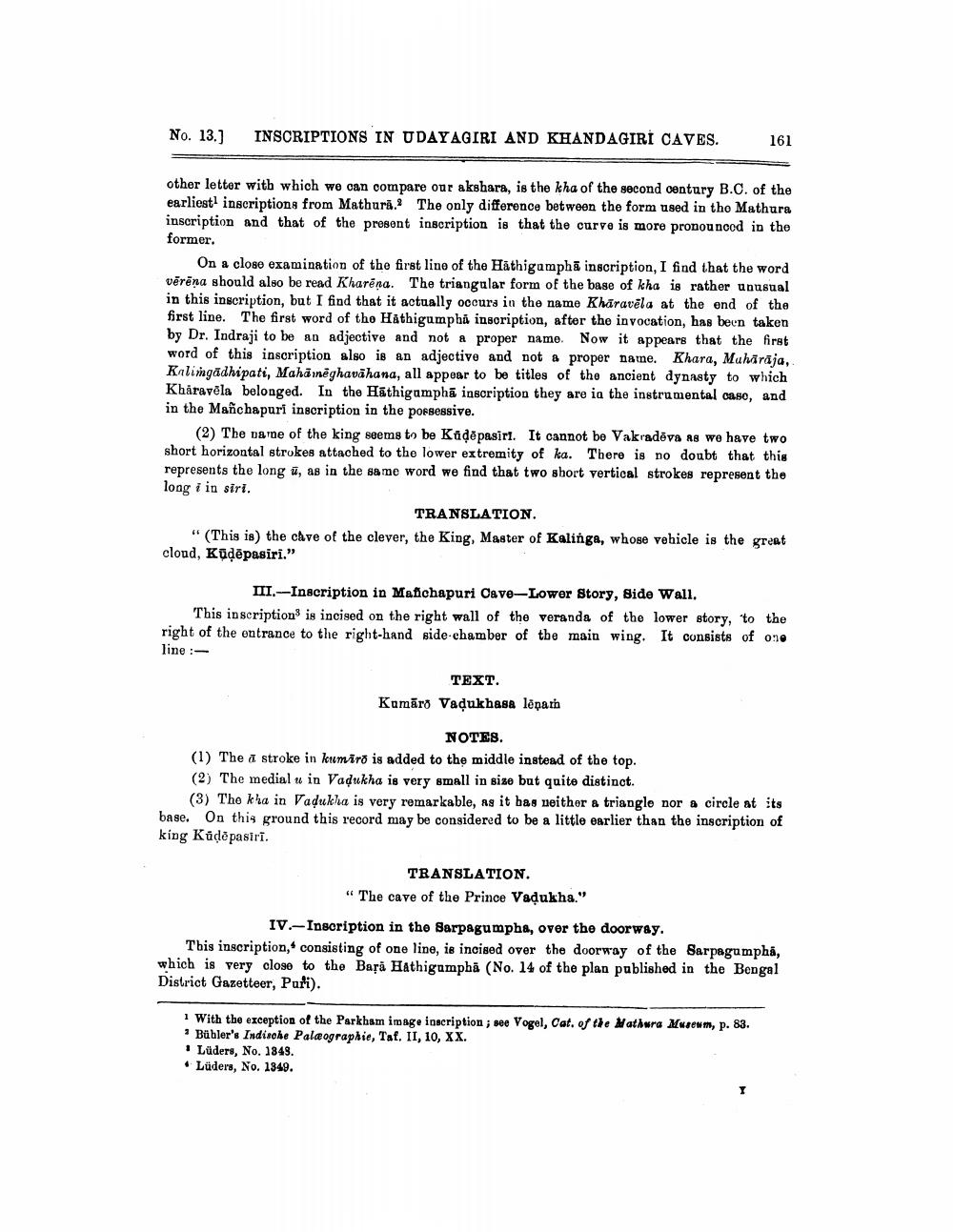________________
No. 13.)
INSCRIPTIONS IN UDAYAGIRI AND KHANDAGIRÍ CAVES.
161
other letter with which we can compare our akshara, is the kha of the second century B.C. of the earliest inscriptions from Mathură. The only difference between the form used in the Mathura inscription and that of the present inscription is that the curre is more pronounced in the former.
On a close examination of the first line of the Häthigamphā inscription, I find that the word vērēna should also be read Kharēna. The triangular form of the base of kha is rather unusual in this inscription, but I find that it actually occurs in the name Khāravēla at the end of the first line. The first word of the Hathigumpha inscription, after the invocation, has been taken by Dr. Indraji to be an adjective and not a proper name. Now it appears that the first word of this inscription also is an adjective and not a proper naine. Khara, Mahārāja, Kilimgādhipati, Mahānēghavāhana, all appear to be titles of the ancient dynasty to which Khåravēla belonged. In the Hāthigamphā inscription they are ia the instrumental caso, and in the Mañchapuri inscription in the porsessive.
(2) The Dare of the king seems to be Kadēpasiri. It cannot be Vakradēva as we have two short horizontal strokes attached to the lower extremity of ka. There is no doubt that this represents the long w, as in the same word we find that two short vertical strokes represent the long i in siri.
TRANSLATION "(This is the cave of the clever, the King, Master of Kalinga, whose vehicle is the great cloud, Kudēpasiri.”
TII.--Inscription in Mafichapuri Cave-Lower Story, Side Wall. This inscription is incised on the right wall of the veranda of the lower story, 'to the right of the entrance to the right-hand side chamber of the main wing. It consists of 0. line :
TEXT. Kumāro Vadukhasa lepath
NOTES. (1) The a stroke in kumiro is added to the middle instead of the top. (2) The medial u in Vadukha is very small in size but quite distinct.
(3) The kha in Vadukha is very remarkable, as it has neither a triangle nor a circle at its base. On this ground this record may be considered to be a little earlier than the inscription of king Kūdepasirī.
TRANSLATION.
“The cave of the Prince Vadukha." IV.-Inscription in the Sarpagumpha, over the doorway. This inscription, consisting of one line, is incised over the doorway of the Sarpagumpha, which is very close to the Basa Hathigampha (No. 14 of the plan published in the Bengal District Gazetteer, Puri).
1 With the exception of the Parkbam image inscription ; see Vogel, Cat. of the Mathura Museum, p. 83. * Bübler's Indische Palæographie, Taf. II, 10, XX. · Lüders, No. 1843. • Lüders, No. 1349.




